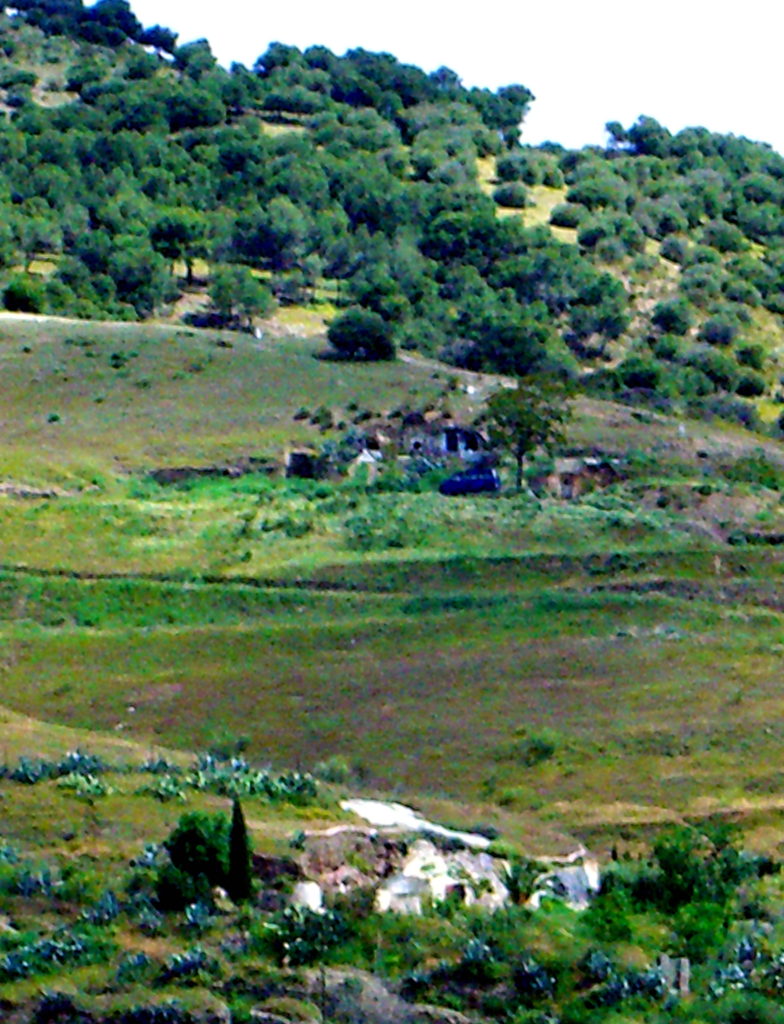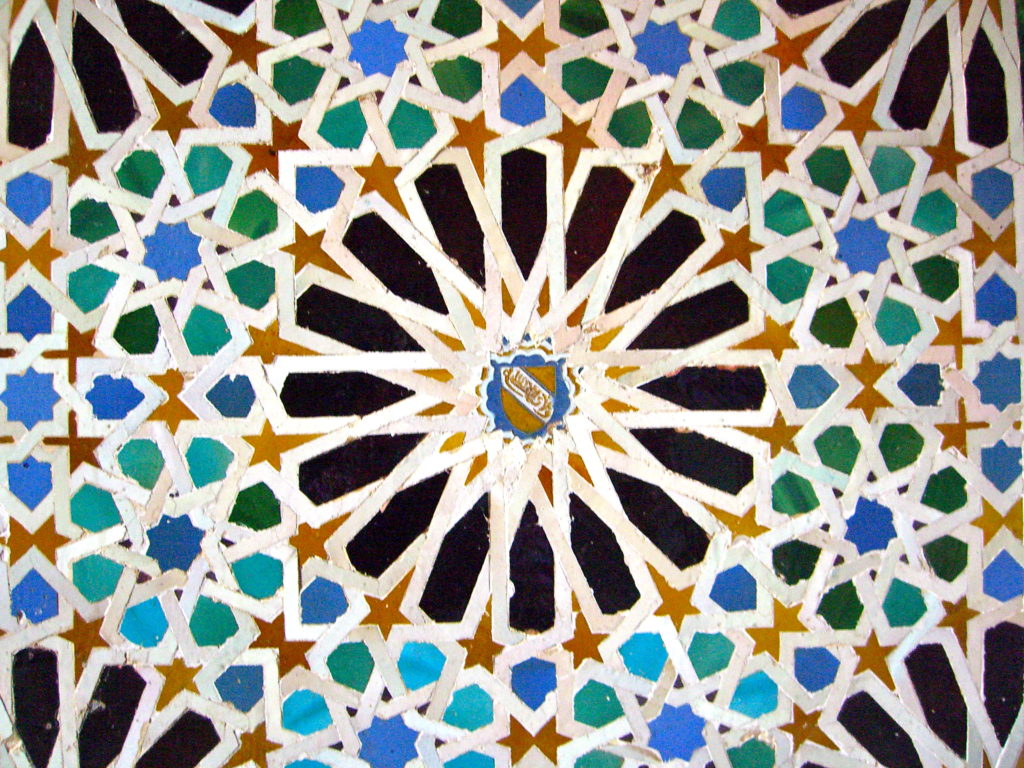



The majority of the palace was made of quadrangular buildings which opened on to a central court.
All additions added throughout history followed the same pattern consistent with the theme of “paradise on earth.”
The Alhambra was built with columned arcades, fountains with running water and reflecting pools. The exterior walls were left plain.
Sun and wind was welcomed. Red, blue, and a yellow gold color were the main colors used to decorate with.
The upper walls were decorated with the with Arabic inscriptions – mostly poems by Ibn Zamrak and others praising the palace and manipulated into geometrical patterns.
Most of the ornamentation is finely carved into the stucco walls.
Tile mosaics called alicaldo, made of complicated mathematical patterns (traceria or laceria) are used on the lower portions of the interior walls.
Maqarnas are the main elements for the vaulting of the ceilings in stucco. The best examples of those are found in the Court of the Lions Hall.
The Arabs invented the game of chess. The motif of the pawn is often seen along the middle of the walls running along the top of the tile decoration of the lower walls.
Come here and see it for yourself. It is worth seeing and learning about.
Learn more about Spain and the Mediterranean Countries in my book, “Sailing Away” on Amazon now.



